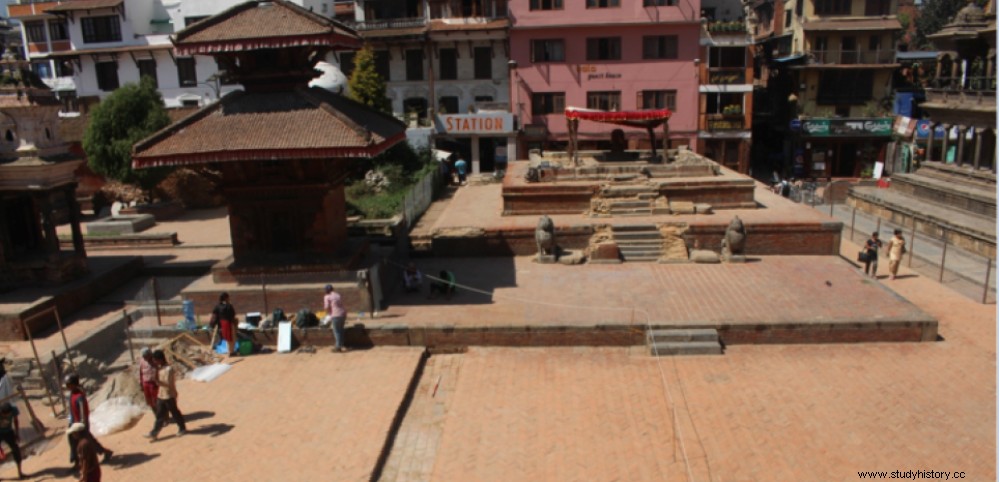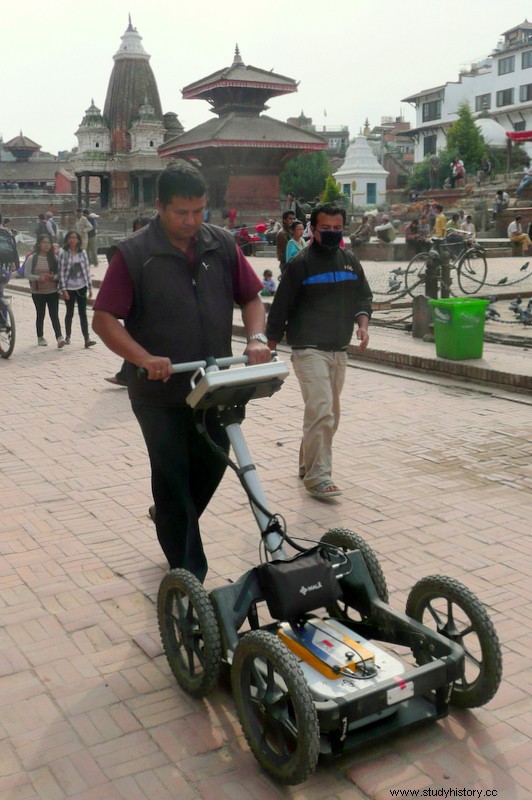 Unesco-led archaeological work begins at Durbar Square in Patan, Kathmandu Valley, Nepal. At the back what remains of the Char Narayan temple totally destroyed during the earthquake of April 2015.
Unesco-led archaeological work begins at Durbar Square in Patan, Kathmandu Valley, Nepal. At the back what remains of the Char Narayan temple totally destroyed during the earthquake of April 2015. Slowly, Kathmandu is reborn from chaos, allowing archaeologists to regain possession of the premises. On April 25, a deadly earthquake measuring 7.8 on the Richter scale hit Nepal and devastated entire provinces, killing 8,000 people and making hundreds of thousands homeless. This natural disaster, followed by numerous aftershocks and another earthquake on May 12, was also accompanied by a cultural disaster with the destruction of unique monuments, including several located in the Kathmandu Valley and its capital (1350m above sea level) inscribed on the UNESCO World Heritage List.
 Image caption:Use of georadar device (GPR) in the city of Patan, to locate remains of ancient walls located under the current brick pavement. © Robin Conningham - University of Durham (UK)/Unesco
Image caption:Use of georadar device (GPR) in the city of Patan, to locate remains of ancient walls located under the current brick pavement. © Robin Conningham - University of Durham (UK)/Unesco
In the heart of the ancient kingdoms of Kathmandu, Baktapur and Patan, temples and shrines from the 12 th at 18 th century in wood and bricks were destroyed. It is therefore through the centers of these three devastated cities that an international team associated with researchers from the Department of Archeology of the Government of Nepal, have just begun a series of investigations and rescue excavations around the collapsed temples."Before the shrines are rebuilt, we will proceed to surveys of the damaged places of Patan, Bhaktapur and that of Hanuman Dhoka, in Kathmandu , explains Robin Cunningham, archaeologist at the University of Durham (England) involved in this research. The goal is indeed to create an archaeological map of the heritage in these three main Durbar*, to better protect them from risks in the event of new disasters" , adds the UNESCO associate researcher. Hence the measurements currently taken using ground penetrating radar (GPR – Ground Penetrating Radar ) to explore the ground in a non-destructive way, and provide precise information on the state of the subsoil and the foundations of classified sites before new constructions are erected. In doing so, the existence of little-known medieval structures and walls that predate the destroyed buildings have been brought to light. This work, entirely financed by Unesco, should last until the end of November 2015.
Durbar (square) , is the generic name used to describe the large squares facing the former royal palaces in Nepal. They consist of temples and shrines, and represent the most important remains in the Kathmandu Valley. The most famous are located in Kathmandu, Patan and Bhaktapur.
